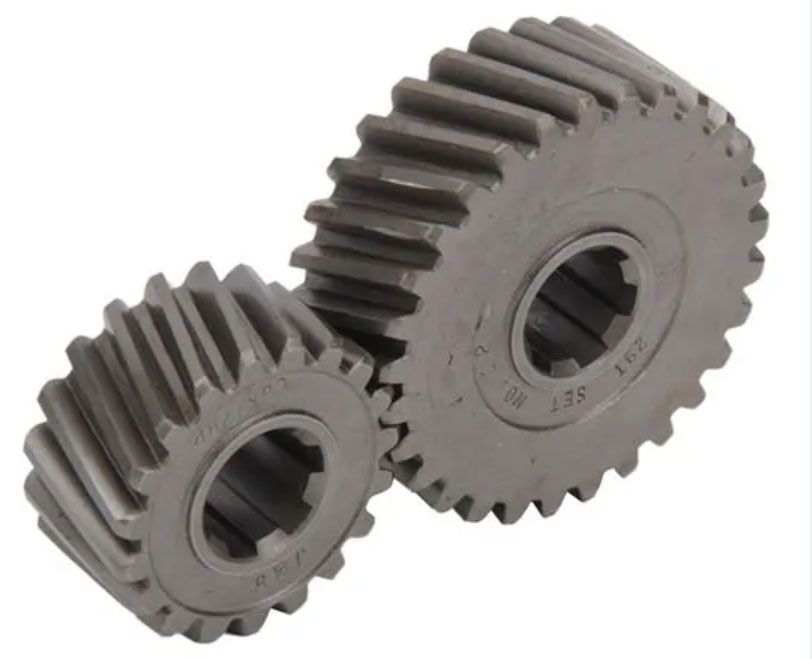Gear geometry and tooth contact analysis are important aspects of helical gear systems. Let’s discuss these topics in more detail:

1.Gear Geometry:
The geometry of helical gears includes parameters such as gear pitch, module, helix angle, pressure angle, tooth profile, and tooth dimensions. Here are some key aspects:
a. Pitch and Module: The pitch represents the axial distance between corresponding points on adjacent teeth, while the module is the ratio of the pitch diameter to the number of teeth. These parameters determine the size and spacing of the teeth.
b. Helix Angle: The helix angle is the angle between the tooth helix and the gear axis. It affects the axial thrust and the tooth load distribution along the tooth width. Common helix angles range from 15° to 45°.
c. Pressure Angle: The pressure angle is the angle between the tooth force and the gear tangent. Typical values for helical gears range from 14.5° to 30°. Higher pressure angles result in stronger teeth and better load distribution.
d. Tooth Profile: The tooth profile determines the shape of the tooth. Common tooth profiles for helical gears include involute and cycloidal. The involute profile is widely used due to its favorable meshing characteristics.
e. Tooth Dimensions: The tooth dimensions, such as tooth height, addendum, dedendum, and clearance, determine the overall size and shape of the tooth and affect the gear meshing and contact characteristics.
2.Tooth Contact Analysis:
Tooth contact analysis is performed to assess the contact patterns and load distribution between the mating teeth of helical gears. The objective is to ensure proper tooth engagement and minimize localized stresses and wear. Here are the key considerations:
a. Tooth Contact Ratio: The tooth contact ratio is the ratio of the contact length to the tooth pitch. A higher contact ratio indicates better load distribution and reduced tooth bending stress. A common target is a contact ratio of 1.2 to 2.
b. Contact Pattern: The contact pattern analysis involves examining the actual contact area between the mating gear teeth. It should be observed to ensure that it is within an acceptable range and properly distributed along the tooth width.
c. Load Distribution: The load distribution analysis assesses how the transmitted load is distributed across the width of the gear teeth. Uniform load distribution helps prevent excessive localized stresses and tooth damage.
d. Tooth Deflection: Tooth deflection analysis evaluates the deformation and deflection of gear teeth under load. Excessive deflection can lead to tooth misalignment and poor contact, affecting gear performance and durability.Tooth contact analysis can be performed using analytical calculations, computer simulations, or experimental methods. Advanced software packages are available for detailed analysis and optimization of tooth contact patterns.
Proper gear geometry design and tooth contact analysis are crucial to ensure smooth and reliable operation of helical gear systems. It is important to adhere to industry standards, guidelines, and best practices to achieve optimal gear performance, load distribution, and durability.
